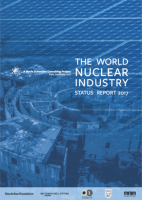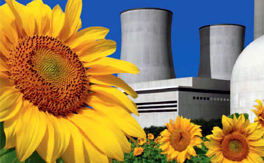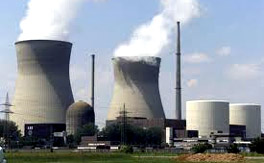
World Nuclear Industry Status Report 2017
The World Nuclear Industry Status Report 2017 (WNISR2017) provides a comprehensive overview of nuclear power plant data, including information on operation, production and construction. The WNISR assesses

The World Nuclear Industry Status Report 2017 (WNISR2017) provides a comprehensive overview of nuclear power plant data, including information on operation, production and construction. The WNISR assesses

The World Nuclear Industry Status Report 2015 provides a comprehensive overview of nuclear power plant data, including information on operation, production and construction. The WNISR assesses the status
The World Nuclear Industry Status Report 2014 provides a comprehensive overview of nuclear power plant data, including information on operation, production and construction. The WNISR assesses the status

This World Nuclear Industry Status Report 2013 (WNISR) provides a global overview of the history, the current status and the trends of nuclear power programs worldwide. It shows that China, Germany and Japan, and India, now generate more power from renewables than from nuclear power.

<p><span id="itro1">The World Nuclear Industry Status Report 2012 provides a global overview of current status of nuclear power and also compares development pattern of renewable energy with the nuclear

<p>This new report provides basic quantitative and qualitative facts about nuclear power plants in operation, under construction, and in planning phases throughout the world.It finds that nearly three-quarters of reactors under construction are located in China, India, Russia & S.Korea but none of these nations have historically been transparent about the status of their construction sites.</p>

This latest report produced by Lloyd's & Chatham House outlines key trends affecting global energy supplies over the next 10 - 20 years, identifying risks associated with both resource constraints and transition to a lower carbon economy.
The Economics of Nuclear Power examines the reasons behind the huge delays and cost over-runs which are common to nuclear power construction projects, and concerns over safety and reliability of new technology, concluding: that in country after country nuclear construction has gone massively over budget; that long construction periods are symptomatic of a range of problems including managing the construction of increasingly complex reactor designs, and inherent within the ailing nuclear infrastructure; that combined with the huge subsidies required, uncompetitively high prices, poor reliab
<p>A new myth of the nuclear lobby is the claim that nuclear power and renewable energies are complementary forms of energy. The authors Antony Froggat and Mycle Schneider prove the opposite: those who build nuclear power plants hinder the expansion of renewable energies.</p>